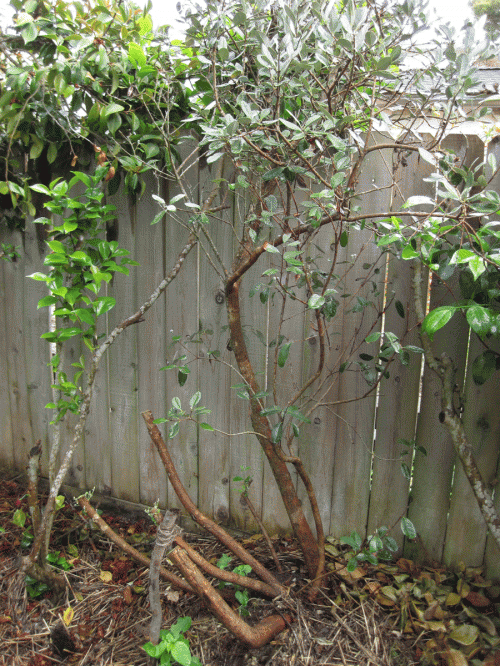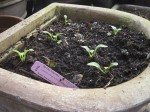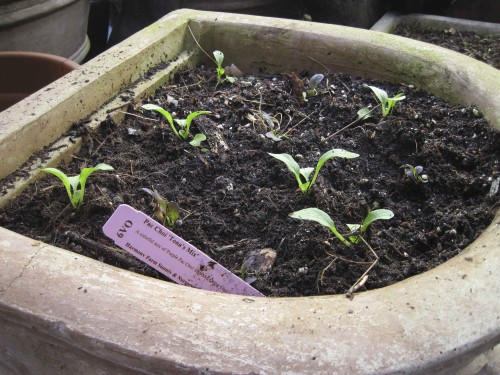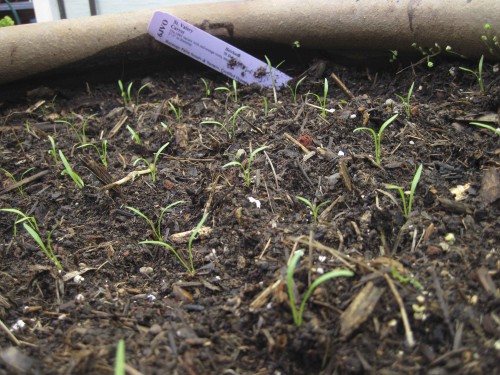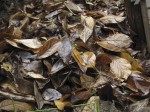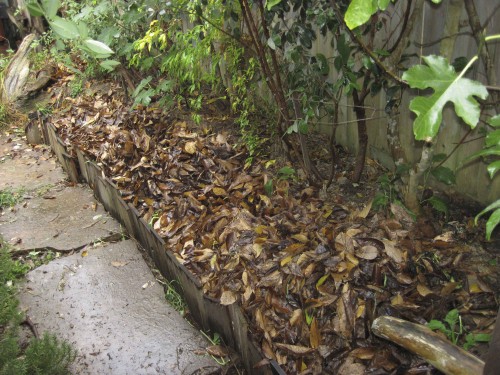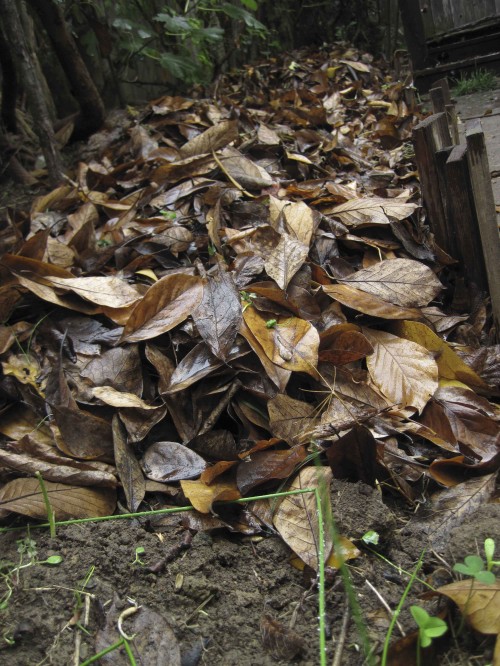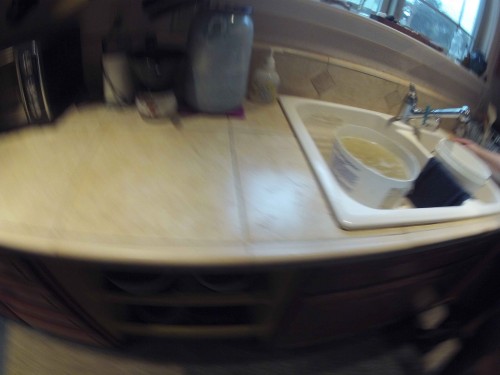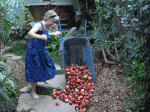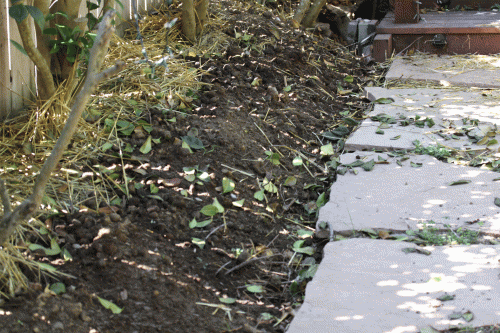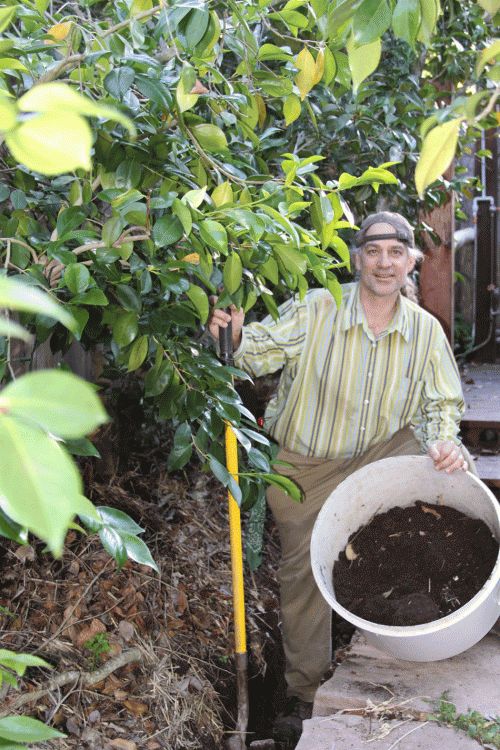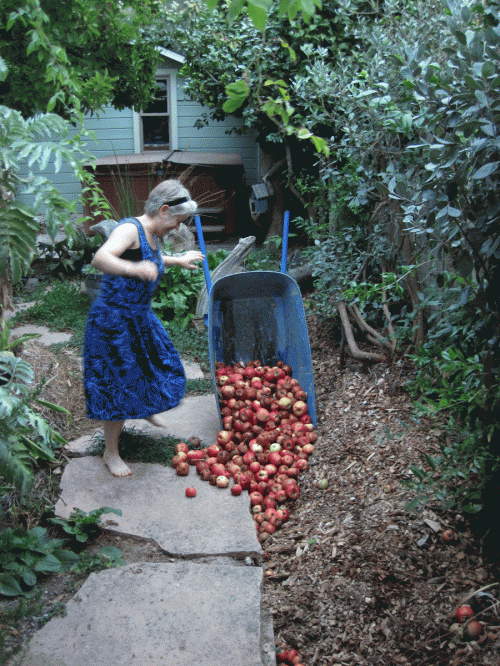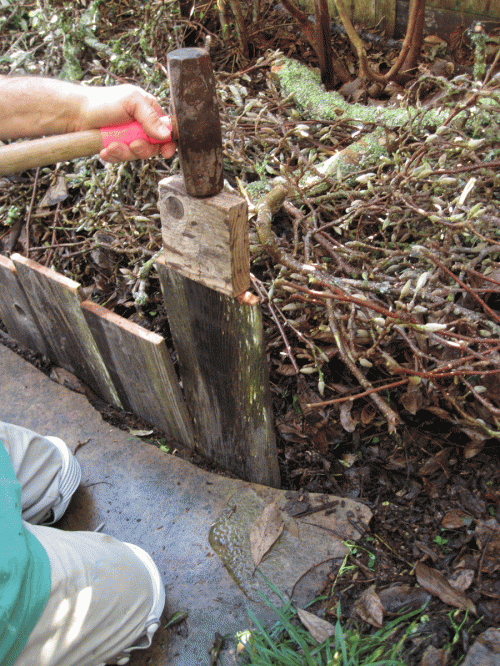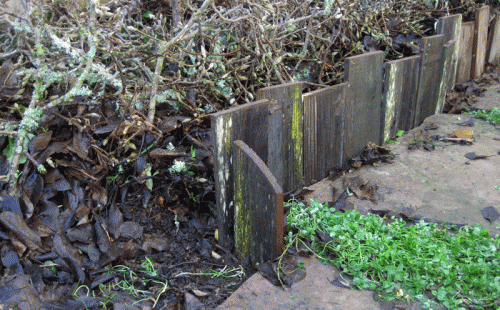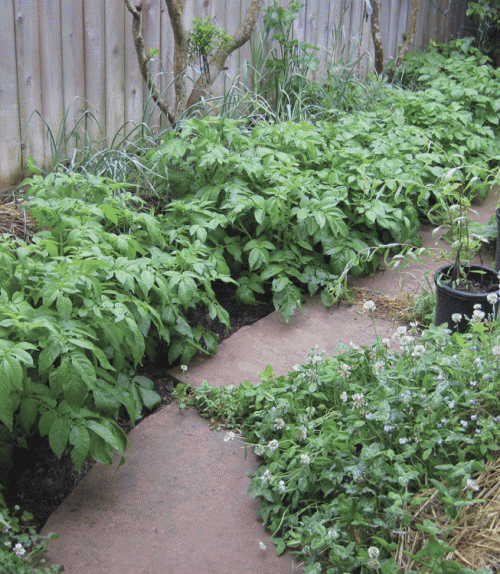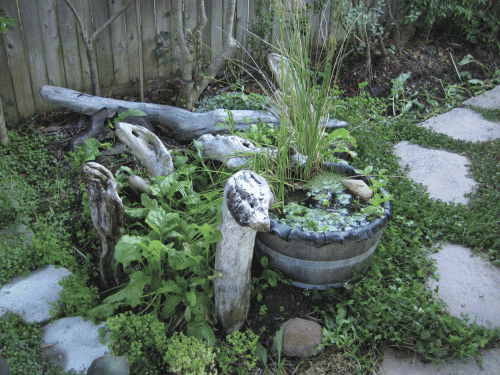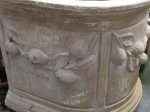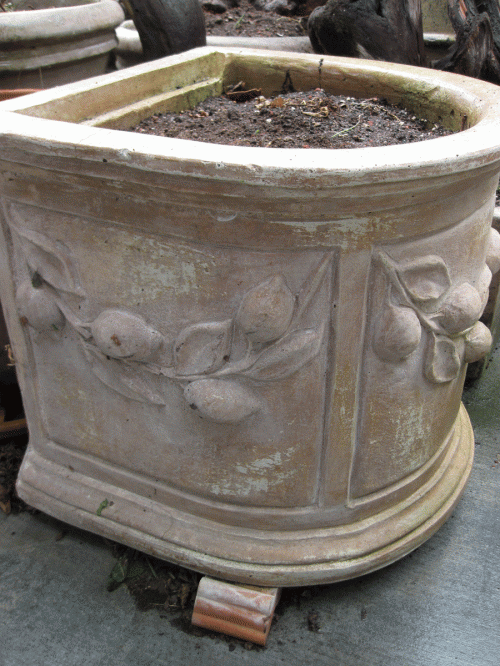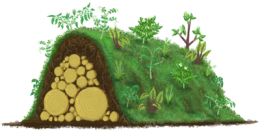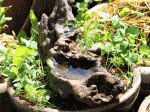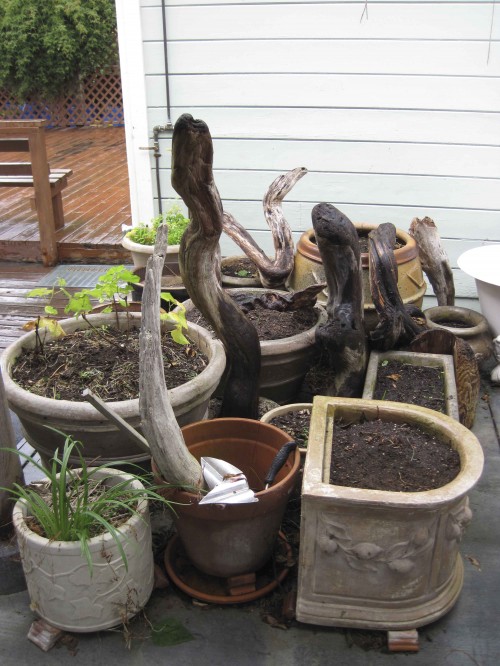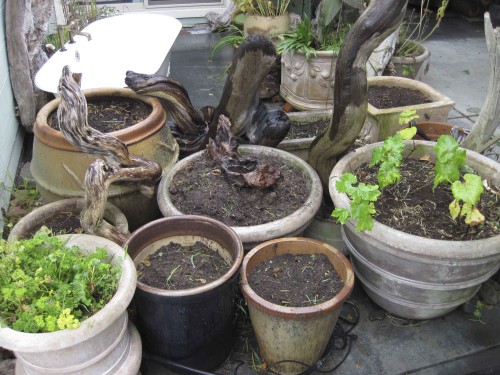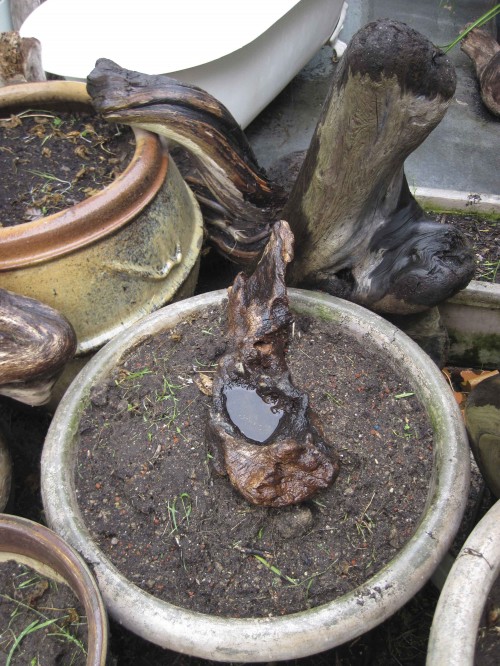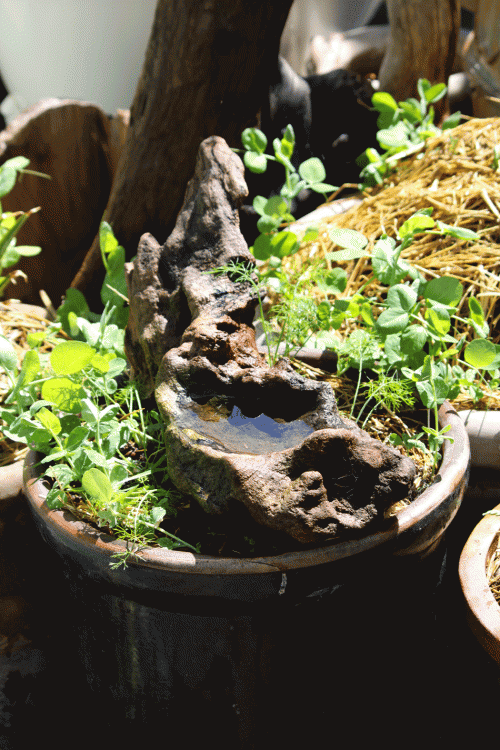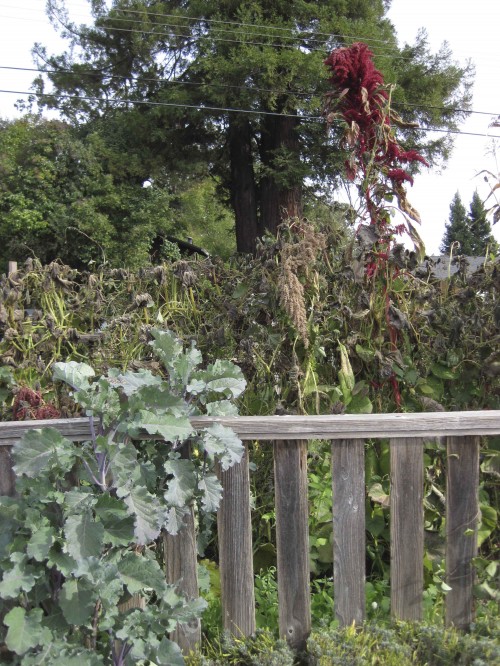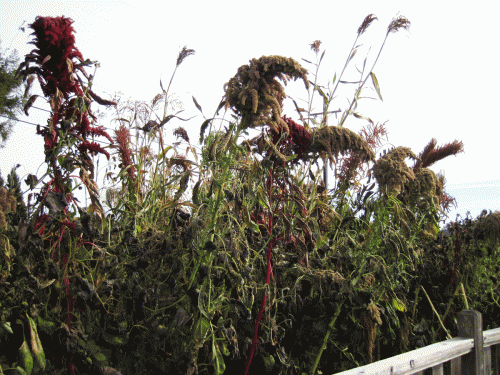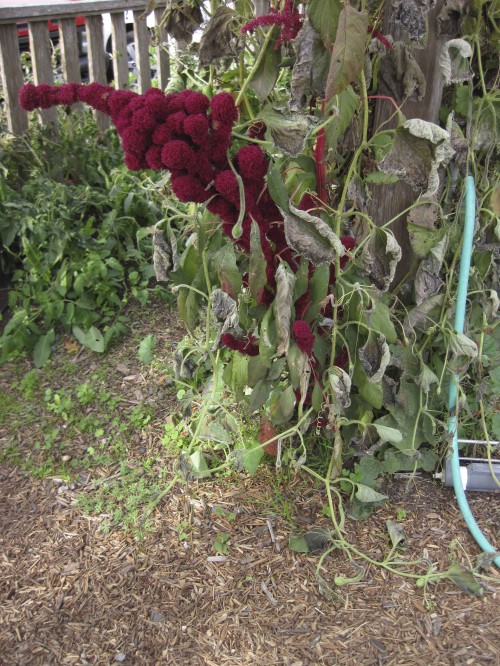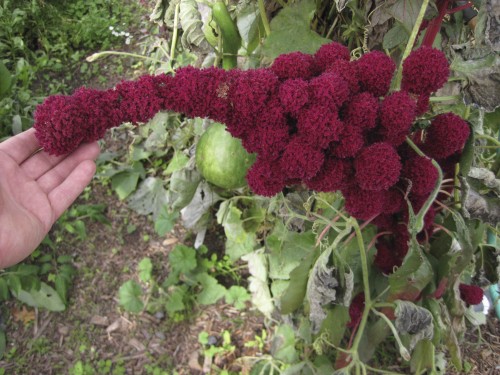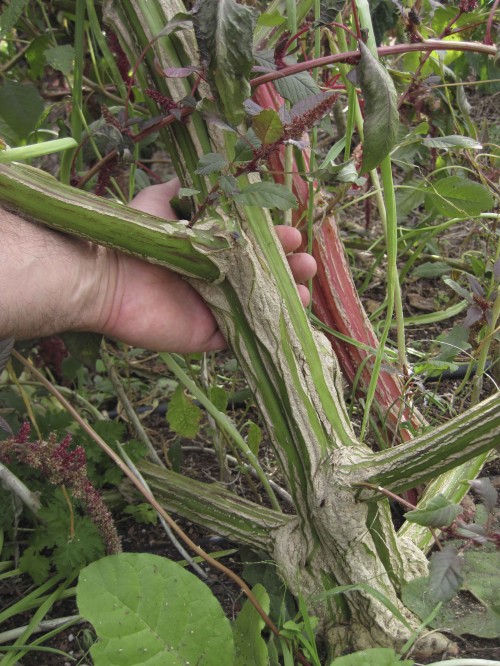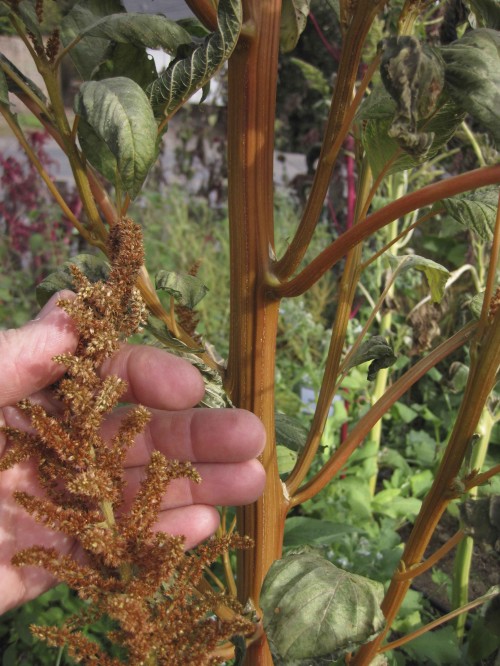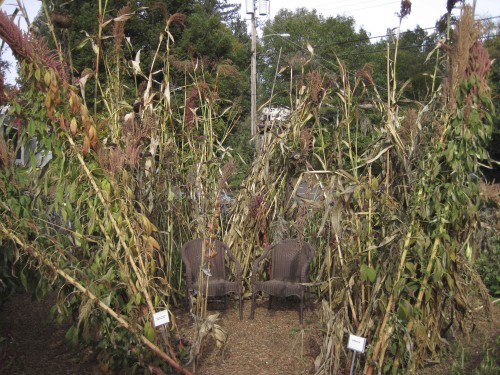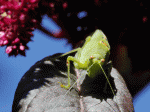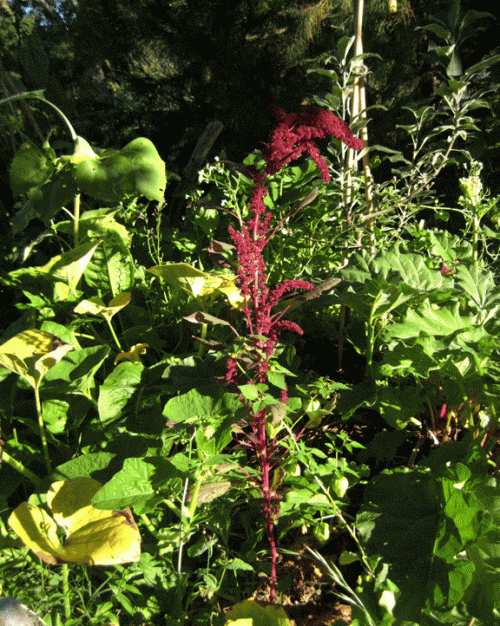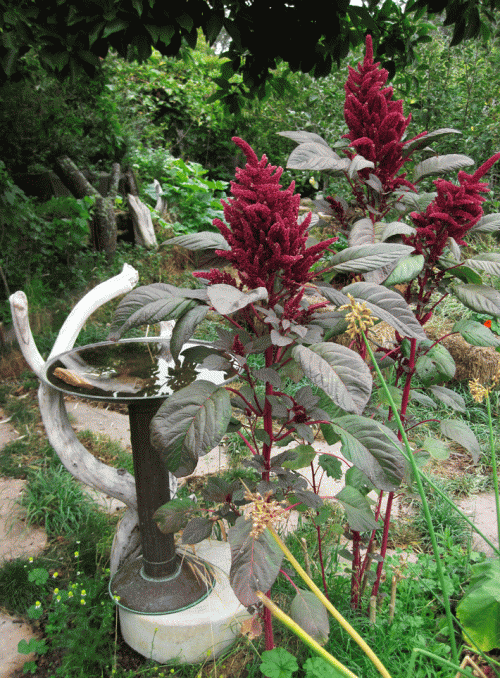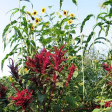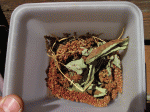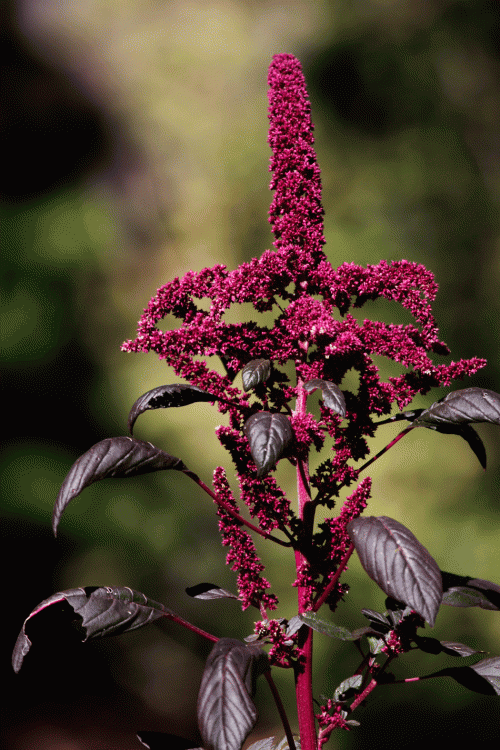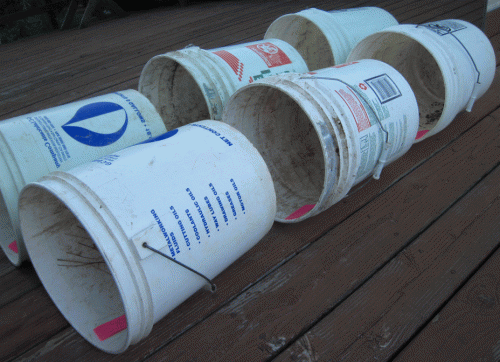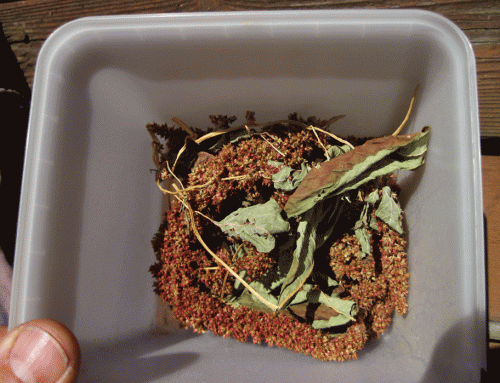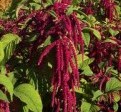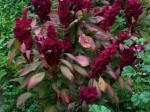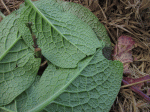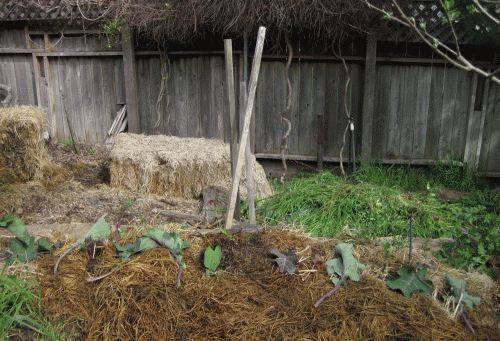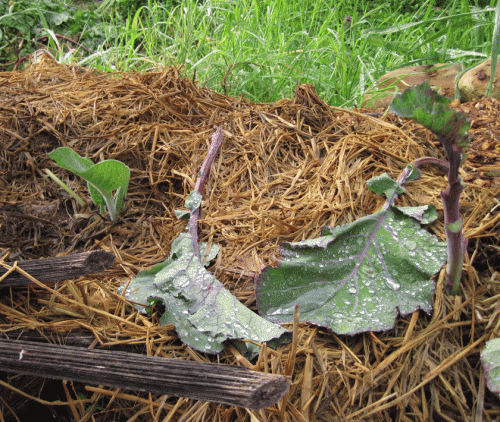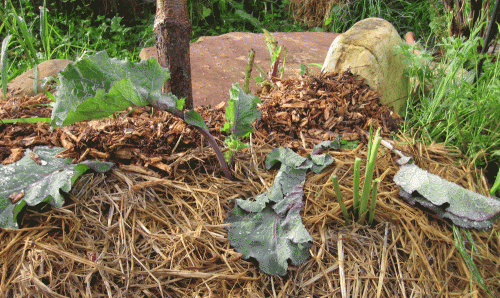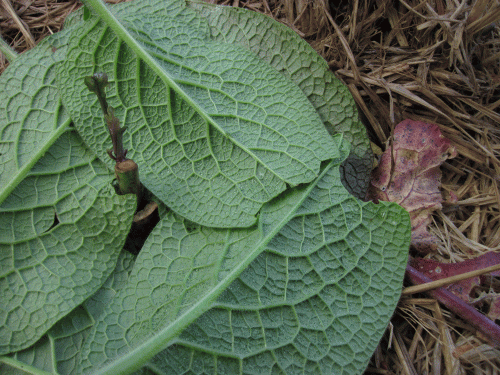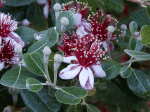
First a video re “Pineapple Guava Harvest”, then some pics of pineapple guava trees and fruit (below the video):
Pineapple Guava Harvest (video):
Pineapple Guava Trees and Fruit (pics):
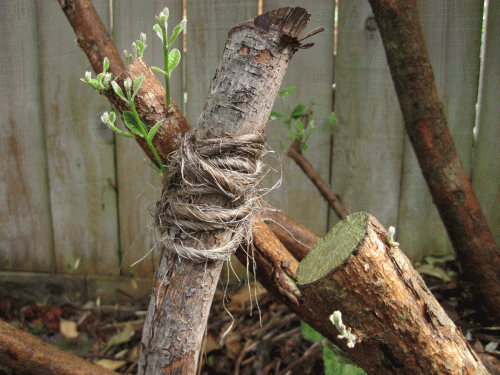
Close-up of new buds on pineapple guava transplant. And growth continued! The large preserved rootball came back to show us what it could do.

Pineapple guava blossom. These "feijoa" evergreen shrubs or small trees are native to Brazil and nearby areas. Blossoms must be pollinated from another plant/shrub.
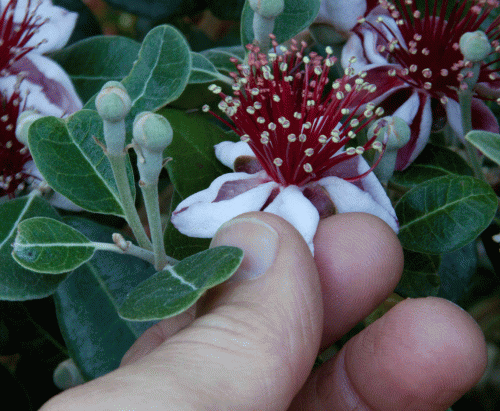
Picking a little bit of Paradise. The flower petals of the feijoa make a sweet treat, perfect to garnish a plate with. The petals are sweet morsels of joy AND removing them does not prevent the flower from being pollinated. Sometimes you can have your cake AND eat it, too!
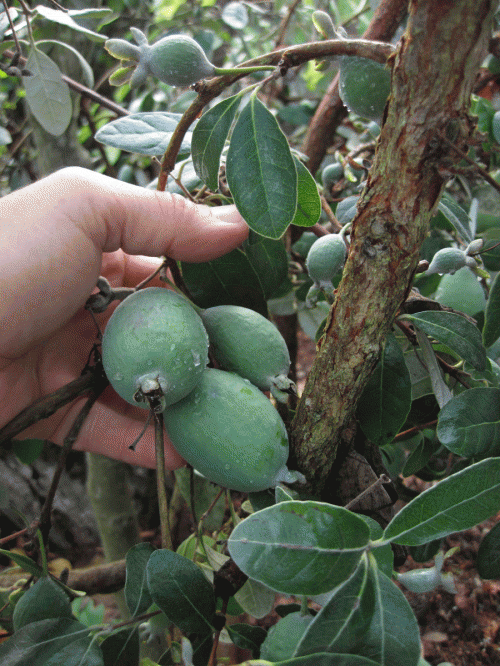
Harvest time for these soft, juicy pineapple guava. Most people cut the fruit in half and scoop out the soft flesh. I eat the whole fruit – who’s got time to get a spoon?!
Pic and caption from Tony’s new book, Habitat It and They will Come :
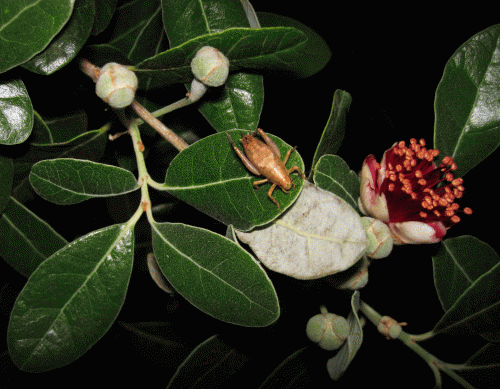 Figure 2.5B Cricket on Pineapple Guava (feijoa). What will it be, Cricket, wait till September for the sweet fruit or enjoy the pineapple guava’s moist sugary petals now? Native to mountainous equatorial South America, pineapple guava is deliciously welcomed in our garden.
Figure 2.5B Cricket on Pineapple Guava (feijoa). What will it be, Cricket, wait till September for the sweet fruit or enjoy the pineapple guava’s moist sugary petals now? Native to mountainous equatorial South America, pineapple guava is deliciously welcomed in our garden.
Happy Thanksgiving harvest and see you tomorrow.
Tony

